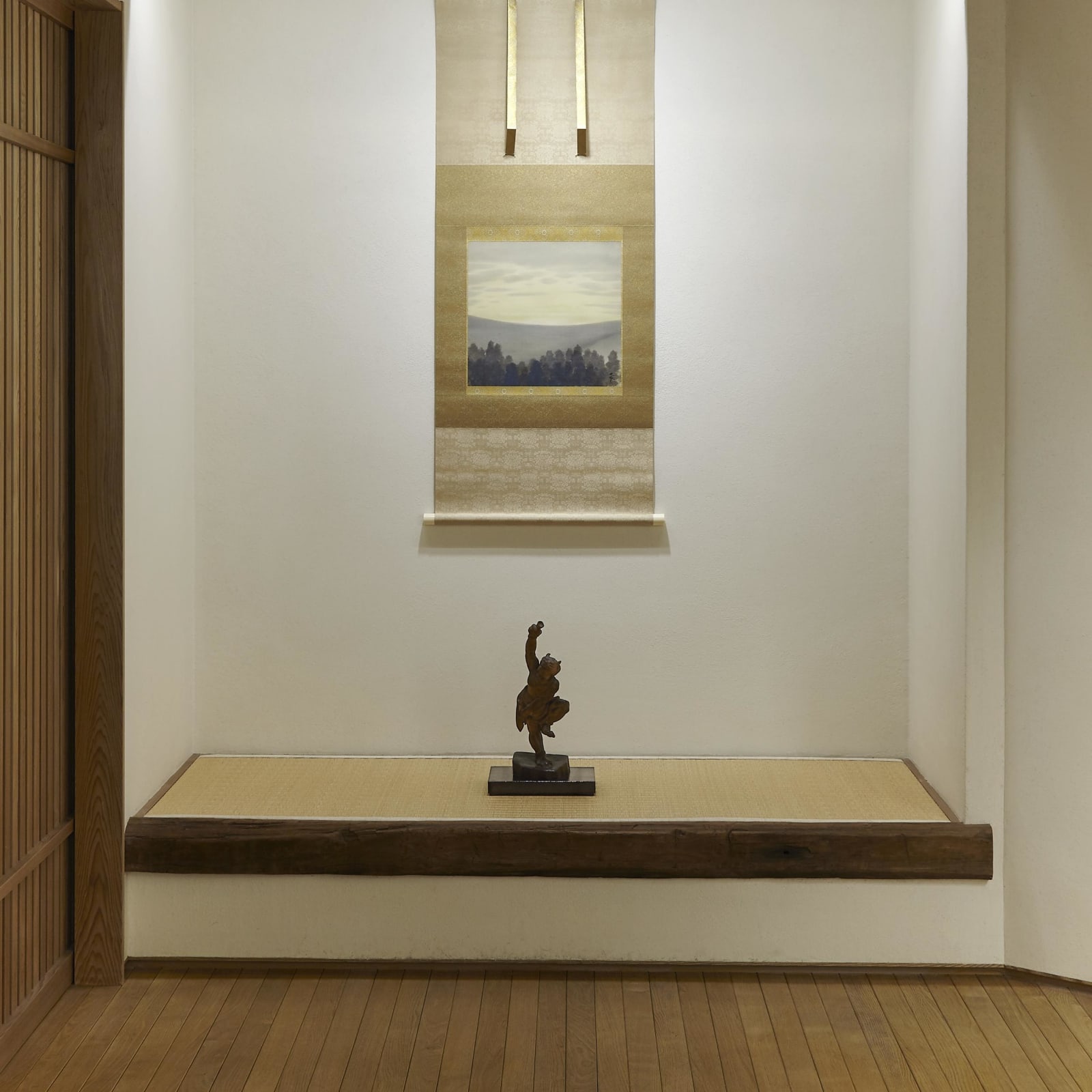Hirakushi Denchū (1872–1979)
Triumph
Incised sign “Rochushi saku” on the backside of the base
With a Hirakushi Hiroko certificate, a box signed by the artist
15.7 x 23.3 x h. 36.4 cm (incl. base)
With a Hirakushi Hiroko certificate, a box signed by the artist
15.7 x 23.3 x h. 36.4 cm (incl. base)
Further images
Grasping a big horn, the demon exults as if he has just won a fight, of which his opponent’s horn is the spoil. He holds the horn in the right hand, and raises the left leg. The composition is well-balanced with his left hand hanging down, body leaning forward, and the robe around his waist draping. Representation of the youthful and lustrous flesh of the body is a feature found in Hirakushi Denchu’s demon-motifed wood carvings at this time, resulting from his studies of Western sculpture in the Taisho era.
When making wood sculpture, Denchu first made a model with clay, developed it into a plaster model, and accurately copied it into wood with the aid of a pointing machine. Therefore, the plaster model serves as a blueprint, which enabled different sizes and numbers to be produced. The plaster model of Triumph is in Ibara Municipal Denchu Art Museum. Notably, there exists few finished works of Triumph, which makes the present piece rather rare and unusual.
Although the work’s title can be easily related to war and fighting spirit, document records that work of the same title is produced in 1929. Judging from the humorous air of the present work, perhaps the war connection is not as strong as it would be assumed.
Hirakushi Denchu (wood sculptor; 1872–1979)
Okayama-born wood sculptor. His real name is Takutaro.
First learned wood-carving under Nakatani Seiko, a doll maker, and became a student of Takamura Koun. Involved in the founding of Nihon Chokokukai (Japan Sculptors Association), and his work exhibited at its first show was recognized by Okakura Tenshin. Appointed Tokyo University of the Arts professor. An Imperial Court Artist, the Japan Art Academy member. A Person of Cultural Merit, and received the Order of Culture.
When making wood sculpture, Denchu first made a model with clay, developed it into a plaster model, and accurately copied it into wood with the aid of a pointing machine. Therefore, the plaster model serves as a blueprint, which enabled different sizes and numbers to be produced. The plaster model of Triumph is in Ibara Municipal Denchu Art Museum. Notably, there exists few finished works of Triumph, which makes the present piece rather rare and unusual.
Although the work’s title can be easily related to war and fighting spirit, document records that work of the same title is produced in 1929. Judging from the humorous air of the present work, perhaps the war connection is not as strong as it would be assumed.
Hirakushi Denchu (wood sculptor; 1872–1979)
Okayama-born wood sculptor. His real name is Takutaro.
First learned wood-carving under Nakatani Seiko, a doll maker, and became a student of Takamura Koun. Involved in the founding of Nihon Chokokukai (Japan Sculptors Association), and his work exhibited at its first show was recognized by Okakura Tenshin. Appointed Tokyo University of the Arts professor. An Imperial Court Artist, the Japan Art Academy member. A Person of Cultural Merit, and received the Order of Culture.











